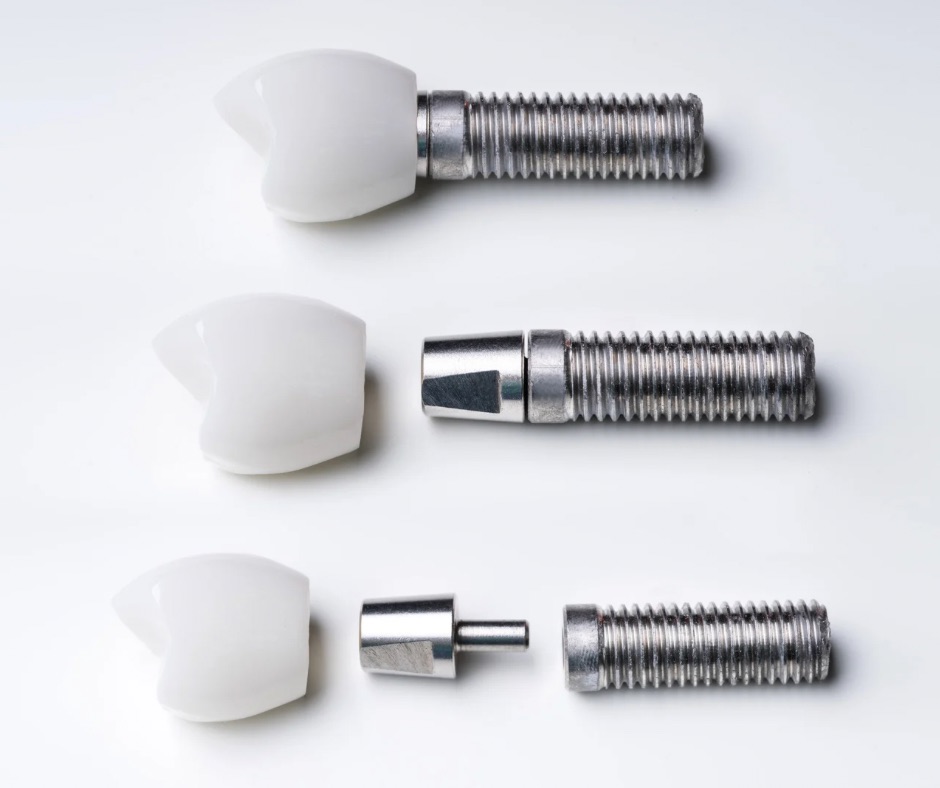Zircon vs. titanium in dental implants: The fight for aesthetics and functionality
Although they are very similar in properties, there is always uncertainty over which implant material to choose.
The success of implantology, which provides permanent and aesthetically appropriate solutions for replacing lost teeth, rests on the materials used in this branch of dentistry. First of all, there is titanium, a silver-white, shiny, light, but extremely strong metal that is distinguished by its outstanding resistance to corrosion in many environments.
It has been used in dental implantology for about 60 years, thanks to the Swedish orthopedist Per-Ingvar Brånemark, who, while investigating the blood circulation in the bones, used microscopic cameras that were attached to the bones with small titanium cylinders, and when he tried to remove them, he realized that the cylinders have irreversibly integrated with the bones and that it is impossible to remove them without damaging the bone.
Titanium – a synonym for dental implants
He called this ability of titanium to integrate with human bone without rejection osseointegration and saw the potential of this discovery in dental implantology. After thorough research and experiments, in 1965 the first titanium dental implant was placed in a patient who wore it until his death in 2006, which is considered one of the key proofs of the success and longevity of titanium in dental implantology.
Over time, titanium has become synonymous with dental implants due to its exceptional strength, but also the low mass of the material, its resistance to corrosion and, most importantly, its biocompatibility, which allows the body to accept the implant. It is this ability to integrate titanium with the surrounding bones that is considered the key reason for the long-term success of implants.
Zircon – unrivaled in terms of aesthetics
In addition to titanium, dental implants are also made of zircon, i.e. zirconium dioxide (ZrO2). Due to its properties, it is considered the best alternative material in dental implantology.
Zircon is especially prized for its ability to mimic the natural appearance of teeth, and although it is not as strong as titanium, it is still strong enough to withstand chewing forces, making it a reliable material for dental implants and crowns. Similar to titanium, zircon is extremely biocompatible, which means that the risk of rejection or allergic reactions is minimal. Therefore, compared to titanium, its only advantage is in the aesthetic sense.
Sources and applications
Although titanium is relatively abundant in the Earth’s crust, obtaining it is expensive and technologically demanding, but due to its outstanding properties and wide range of applications, it has remained irreplaceable in numerous technologically advanced industries.
It is mostly obtained from mining minerals such as ilmenite (FeTiO3) and rutile (TiO2) through complex processes in which titanium tetrachloride (TiCl4) is reduced with metallic lithium or magnesium.
Zircon, on the other hand, is a silvery-white metal that belongs to the group of transition metals in the periodic table of elements. It is mainly obtained from the mineral zircon (ZrSiO4) through complex extraction and refining processes. One of the key steps in zircon production is the reduction process, where zirconium chloride (ZrCl4) is reduced by magnesium metal or other processes to produce pure zircon.
In addition to making dental crowns, bridges and implants, zircon – due to its ability to absorb neutrons – is used in the nuclear industry, for coating fuel rods in nuclear reactors, but also in the production of airplanes and chemical equipment (due to its resistance to high temperatures and corrosion).













